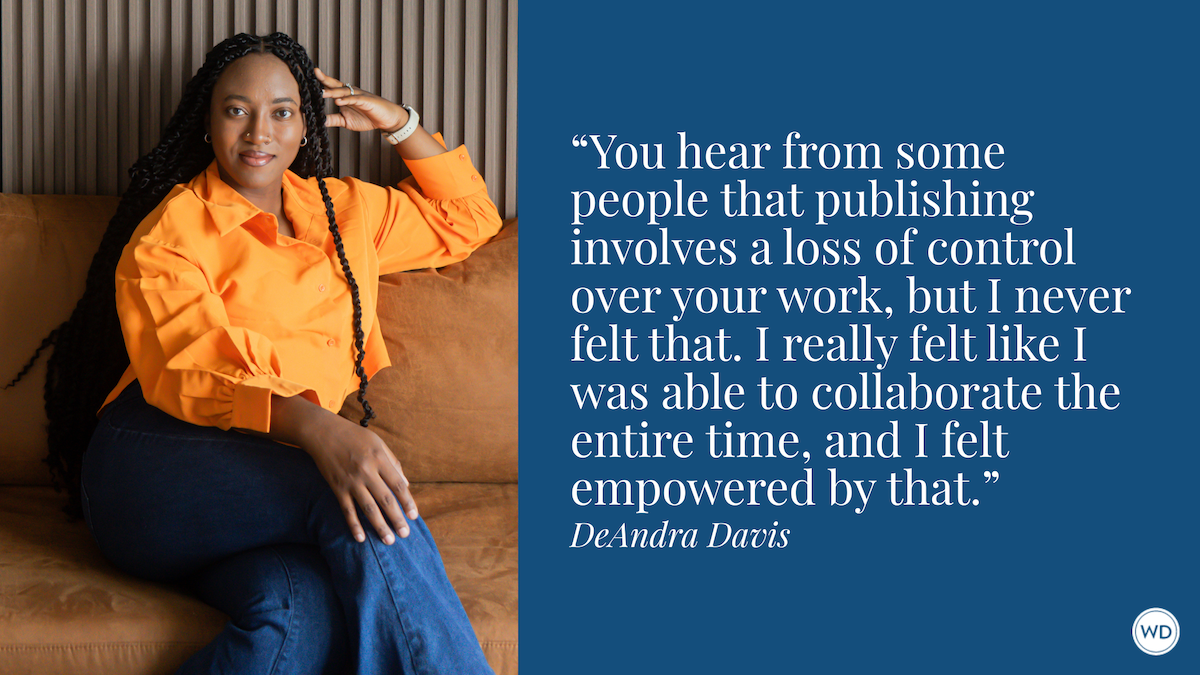3 Do’s and Don’ts of World-Building for Writers
In this article, WD editor Moriah Richard tackles 3 important do’s and don’ts for writers as they tackle the world-building in their works-in-progress.
I was recently poking around on Reddit threads when I came across this comment by a user (whose account was deleted by the time I came across the comment, so I cannot properly credit them here): “You put your novel into the world, not the world into your novel.”
Huh, I thought. What an amazing way to summarize the largest struggle that fiction writers face when tackling a story.
As I’ve mentioned before, world-building isn’t just limited to complex fantasy and sci-fi stories; all fiction must create a world for the reader to dive into, one that has a specific set of rules, sensations, heroes, villains … the list goes on. When it comes to the do’s and don’ts of tackling this process, the list is probably endless (and I’m sure I’m not qualified to speak on over half of them). However, there are three that I want to tackle in this article that I think will both assist the writer in constructing their story and the reader in engaging with the story.
3 Do’s and Don’ts of World-Building for Writers
Don’t spam readers with details off the bat.
This is both the sign of an immature writer and an unfocused story. Most readers don’t crack open a book to read a meticulous record of every note you’ve taken about your world. They come for the story. If you give them too many unfamiliar details or words in the first few pages, they might feel lost and stop reading.
If we look beyond the reader, the reason why writers and editors don’t enjoy this kind of world-building is that it feels lazy. Instead of taking the time to fully immerse your reader in the unique details of your world, you chunk it up on just a few pages.
I like to think of it this way: When you get into a hot tub, the best way to acclimate yourself to the temperature is to lower yourself in slowly. You don’t really see people executing a cannonball maneuver in a hot tub!
Do allow your reader to experience the world through your character’s POV.
Remember that your story is going to be filtered through the eyes of your characters! To avoid info-dumping, remember that your character wouldn’t be explaining every little thing as they go about their day. Instead, keep your focus on the scene, and anything that needs to be explained for your reader to understand the plot (like technology, magic, animals, etc.), do so as pointedly as possible. The goal is to make sure that your reader knows exactly what they need to know to keep up with the plot.
A great example of this is in These Violent Delights by Chloe Gong. In the very first chapter, we are introduced to the Scarlet Gang, the White Flowers, the tension between the two families and their heirs, and the mystery that will unfold—why their men are dying of self-inflicted wounds. It’s a lot of information to pack into a single chapter, but it unfolds naturally; some of it we find out through dialogue, some through exposition, and all of it is filtered through the eyes of Juliette, which gives us not only the information but her feelings about all of it, as well.
Your world-building is unique, yes, but your characters are what will really sell your story.
Don’t build in details not relevant to the plot.
When you spend so much time carefully researching and fleshing out the details of your world, you may be tempted to share all of that with your reader. However, any details that detract from your main plot will confuse the reader. If your characters aren’t dealing with the country’s governing body, it’s probably not necessary to detail every leader that they’ve had for the last 100 years.
If the last piece of advice was a hot tub, this one is a car; you want to be able to drive your readers to each of your plot points with as few stops as possible. If you want them engrossed with your story, make sure you’re not pulling over every few pages to look at something random on the side of the road.
Do flesh out your world enough for it to feel real.
You want to make sure that your reader has just enough detail to be able to follow your plot—if they have too many questions about the how and why of your world, they may get frustrated with your plot. The right balance is making sure they have what they need to understand the world without being thrown out of it.
For this example, The Fisherman by John Langan comes to mind. In Part I of the book, Men Without Women, we hear how the narrator, Abe, came to love fishing, how he met his fishing buddy and the elements of the world that hint at something darker under the surface. I was utterly captivated by a painting at Abe’s favorite diner that “was so old, so begrimed with the smoke of a thousand omelets and hamburgers, that only by diligent and careful study could you begin to develop an idea of its subject.” Abe says that
“Once, it must have been the first time I stopped at Herman’s, I saw a bird swooping down out of the sky, a crow, maybe. Another time, I thought it might be a bat. Then, since the rest of diner was done up in fishing memorabilia, I decided the painting must be a fishing scene. Throughout these deliberations, I received absolutely no help from the diner’s staff, who told me they weren’t sure where the painting had come from … That morning, when Dan and I sat down at the counter and ordered our coffees, with no help from anyone else I saw a fish in the black blotch at the painting’s center, something long, serpentine, a pike, say. The fish had been hooked, and was twisting as it fought its fate.”
While this may seem like an inconsequential detail, something shivered down my spine as Abe described that painting, the certainty he experienced on that particular day, and then when you find out what happens after, you realize that there had been something more important to that revelation than Abe—or the reader—realized at the time.
Don’t neglect “mundane” or “trivial” details.
When making a new world, it can be instinctual that you want to put what makes your world different at the forefront of your story. Magic, royal families, and technology can seem exciting, and they set you apart from other writers. However, even though writers and readers alike love to celebrate creativity and uniqueness, having too much of it in your story will also make your world feel distant and unfamiliar. You want your readers to be able to connect with the characters and their world; the more of themselves they can see in your story, the more you’ll hook them in.
Do engage your reader at the human level with objects that are familiar and character-centered.
Ever wonder why so many authors take the time to detail things like food, clothing, or music? It’s because an easy way to draw your readers into your world is to take something familiar to them and give us enough detail to understand how it functions in your setting and why it’s purposeful to the reader.
For an example of this, The Hunger Games comes to mind. Specifically, the tracker jackers (honestly, I think they stand out so much because I am so afraid of wasps). Wasps and bees are familiar to readers, and we get the simple explanation of tracker jackers being genetically modified to be worse than any wasp or bee we can think of. Suzanne Collins takes a lot of things familiar to our world and gives us just enough explanation to understand why it’s different. This can be done with everything from weapons to food to transportation!
The most important thing to remember is that these details need to relate back to the character in some way. Tracker jackers are cool (and terrifying), but the only reason they matter is that Katniss has a run-in with them later in the book. If they were just discussed arbitrarily, they wouldn’t be memorable, and readers would probably have wondered why they were being mentioned in the first place.
As always, there’s no right or wrong way to world-build—in fact, I’m sure we could all come up with instances where writers have done the opposite of what I’ve suggested here and done it well. However you tackle the transition of your world to the page, just be sure that you’re always putting your character and the way they interact with the world before the neat little details that aren’t directly influencing your plot.
Since obtaining her MFA in fiction, Moriah Richard has worked with over 100 authors to help them achieve their publication dreams. As the managing editor of Writer’s Digest magazine, she spearheads the world-building column Building Better Worlds, a 2023 Eddie & Ozzie Award winner. She also runs the Flash Fiction February Challenge on the WD blog, encouraging writers to pen one microstory a day over the course of the month and share their work with other participants. As a reader, Moriah is most interested in horror, fantasy, and romance, although she will read just about anything with a great hook.
Learn more about Moriah on her personal website.








